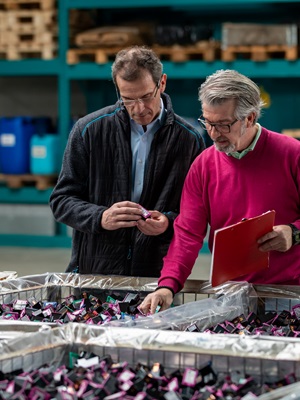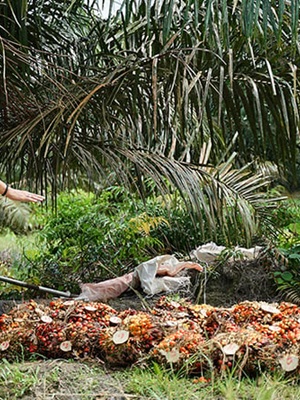Our planet's health is in crisis as signs of climate change are increasingly becoming apparent. Despite this, unsustainable practices in various industries continue to persist. One of the major contributors to the worsening climate change situation is the food production industry. According to research, 34% of all man-made greenhouse gas emissions are generated by food systems– from production all the way to consumption.
However, as public interest in sustainability grows, many companies in the food production and processing industries are also transitioning to greener methods to reduce their environmental impact. From switching to cleaner energy sources to minimising resource usage and providing more environmentally-friendly alternatives, this article will explore the various ways organisations can elevate their sustainability efforts.
Sustainable Practices in Food Production
Amid the growing recognition of the need for environmentally-friendly practices in food production, these five strategies are gaining traction in the effort to promote sustainability within the industry.
1. Shifting to Renewable Energy
Traditional food production processes heavily rely on fossil fuels. By switching to clean energy sources such as solar and wind, carbon emissions will be reduced.
In the International Energy Agency’s Renewables 2023 report, China emerges as the leading country when it comes to renewables, despite being the largest coal producer and importer in the world. China’s renewable energy capacity growth is set to triple over the 2023–2028 period compared with the previous five years. Furthermore, the world’s second largest economy will deploy almost four times more renewable capacity than the European Union and five times more than the United States, which are the second- and third-largest markets for renewables.
Solar irrigation is one of the most mature applications of renewable energy in food production. It enables multiple cropping cycles and improves resilience to changing rainfall patterns by improving access to water. Compared to electricity- or diesel-powered water pumps, lifecycle emissions for solar-powered water pumps are estimated to be 95% to 98%.
Additionally, biomass by-products from agri-food activities can also be used to generate energy for the processing, cooking and storage of products.
2. Reducing Water Usage
Water is a valuable resource that is often taken for granted in the food production industry. It takes large volumes of water to grow crops and raise livestock, with agriculture alone utilising 70% of all freshwater in the world.
One way to save water in agriculture is by improving the irrigation system. Through an irrigation pipeline and gravity sprinkler system, farmers can reduce water usage and time spent watering crops compared to using flood irrigation. Because healthy soils help crops better utilise water, another technique that farmers implement is planting cover crops in the time periods between growing their crops. Cover crops keep soil healthy by cooling the surface, improving soil structure, preventing soil erosion and reducing water and nutrient loss.
Beyond agriculture, companies can also reduce water usage in the food processing industry. A common practice is partially or completely recycling water within a particular process or reusing it in a separate operation. Other sustainable processes may also include dry milling instead of wet milling and cleaning up using dry ice, sweepers or vacuums instead of water-washing.
3. Using Alternative Packaging
With one-third of global plastic packaging contributing to pollution, companies are considering alternatives to single-use plastic for food packaging. From redesigning bottles and containers to include less plastic to using recycled or plant-based, biodegradable materials, companies are continuously looking for ways to reduce plastic waste that ends up in landfills.
With consumers becoming more mindful of their environmental impact, using sustainable packaging will not only reduce your carbon footprint but also improve your brand reputation and business performance.
4. Supporting Local Farmers
When the entire food supply chain is considered, transportation accounts for 19% of total emissions. Supporting local farmers by purchasing fresh produce from them is a good way to reduce carbon emissions.
With over 500 million people worldwide working on their family smallholdings, their expertise in regenerative farming is the key to greener food production. Aside from increasing yields and improving resilience against environmental challenges, supporting local farmers also has a positive impact on the local economy.
5. Implementing Organic Farming Techniques
Using pesticides and other chemicals can contaminate the soil and water supplies. It can destroy ecosystems and kill wildlife.
By shifting to organic farming, which involves using non-toxic fertilisers and pesticides, the risk of contaminated runoff into bodies of water and the soil is reduced. Aside from lowering the risk of pollution, this farming technique is also good for soil health due to organic matter build-up.
Furthermore, natural farming methods translate to healthier food production as they prevent consumers from ingesting pesticide residue.
Green Practices for Sustainable Food Production
Going green in food production may involve making small changes that could have a huge impact on the environment. Something as simple as sourcing products from local farmers and using biodegradable or recyclable packaging can go a long way in helping companies strengthen their commitment to sustainability.
However, it’s important to note that building a sustainable future must be a collective effort. Governments must implement policies that support the shift towards sustainable practices, and consumers must become more conscious in their purchase decisions to contribute to improving the food industry.
Posted 23/07/2024

















